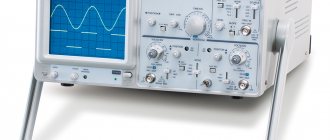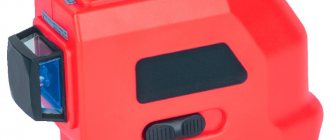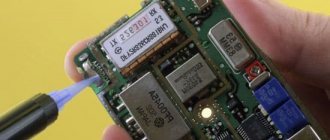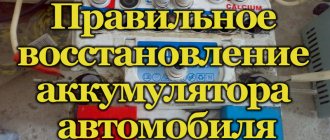Various electrical systems and electronics consist of many parts. To maintain their electrical conductivity and restore functionality, conductive varnish is used. This composition is used in many areas, for example, to repair conductors, remote controls, household appliances, electronics, printed circuit boards, auto glass heating filaments, and other electronic systems.
The conductive varnish solution consists of special fine-grained components; after polymerization, the mixture forms a durable and strong matte film with excellent electrical conductivity. One hour after applying the conductive composition, the electrical conductivity of the system is completely restored. Over the next 10 hours after application, the current conductivity reaches its maximum; in order to enhance the effectiveness of the varnish, a two-layer treatment can be carried out.
Typically, the conductive type of varnish is applied to very small areas, so a negligible amount of solution is required. Taking this into account, these types of varnishes are supplied in small bottles and small tubes. In addition, graphite conductive varnishes are produced in the form of aerosols in cans.
The composition is made from graphite powder and can be applied to create conductive properties on wood, metal, glass and plastic surfaces. This varnish can be used as a lubricant to form a smooth, dry-sliding base that is resistant to various temperatures.
Advantages of conductive varnish
A varnish with decent current conductivity characteristics has a number of associated advantages:
- High adhesion - bonding to materials with a wide variety of textures. The texture can be either smooth or porous, plastic or metal;
- Packaged in convenient containers with a small amount of varnish, complemented by a convenient applicator used for fastening extremely small parts;
- Allows installation of elements that are unable to withstand heating above 1800C;
- Long-term operation of the device, during which the parts heat up, does not deteriorate its properties thanks to the conductive varnish;
- In addition to its conductive properties, this adhesive-containing composition is an excellent sealant;
- Dries in a very short time;
- Tolerates temperature changes;
Requirements
Of course, the main parameter for such products is the quality of current conduction; to obtain the effect, small metallic substances are used in the composition. The most popular is the use of nickel powder; particles of gold or other precious metals can also be selected.
The next necessary criterion is having a low resistivity. The presence of a large number of electrically conductive elements leads to a decrease in adhesive properties.
To reduce the loss of adhesion during use of the item, varnishes are endowed with low thermal resistance. The products require high-quality gluing and the creation of a protective layer, so a high level of elasticity and strength is required, achieved through polymer binders.
The layer should not be very liquid, otherwise parts of the device will be damaged if drops fall on an unnecessary area during repairs.
To reduce the loss of adhesion during use of the item, varnishes are endowed with low thermal resistance.
Application of conductive varnish
Conductive varnish is extremely effective:
- If it is not possible to use an electric soldering iron, since the risk of deformation of the microcircuits increases;
- Often the parts are miniature and elegant - in this situation it turns out that the soldering iron tip is much larger in size than the surface of the part itself;
- Convenient for gluing heating filaments on car windows;
- In radio devices it is used when it is necessary to connect piezoceramic plates;
- When connecting two dielectrics, if communication will be carried out through them;
- Like a “cold” adhesion;
- How to solder fine wires, since the usual hot method is problematic here;
- You can connect broken tracks of remote controls or keyboards;
- Used as a base for paints with conductive properties;
- For repair tasks on computers, mobile devices and other high-tech equipment, when it is necessary to attach crystals and microcircuits to the board;
- Returns current conduction to damaged segments of devices, such as TV remote control buttons, keys on the keyboard;
When installing electric heating systems, for example when installing “warm floors”;
Criteria for a high-quality conductive varnish
The main characteristic of conductive adhesives, sprays and varnishes is their ability to increase the transmission of electricity. Electrical conductivity is achieved due to the presence of powdered metal particles in the adhesive base.
The most popular is nickel powder, as the most effective conductor of electric current.
- Additionally, noble metal powders are added to the composition of such adhesive and current-conducting products at the same time. It can be palladium, gold or silver.
- It is important to take this nuance into account, especially if you are making a similar material at home - the presence of an excessive amount of metal dust weakens the adhesive characteristics.
- At the same time, if the presence of metal in conductive varnish, spray or glue is insufficient, then its electrical conductivity will deteriorate.
The composition must fulfill its main task - gluing and protecting surfaces.
Liquid consistency for these materials is also considered undesirable, since fast drying time is important.
Composition of conductive coatings
These special varnishes are based on special micro-grained components, which, after the polymerization process, form a durable matte film on the treated surface that has good electrical conductivity.
Already 60 minutes after application of such materials, the restoration of electrical conductivity begins. After 10 hours, the result will further improve to its maximum capabilities. Some masters repeat the treatment to enhance the effect.
Since the area treated with these materials is very small, a very small amount of these products is needed to restore any electronic equipment. That is why the electrically conductive composition is offered in small quantities.
Such materials are packaged in small tubes or bottles.
Range of conductive varnishes
This market offers both imported and domestic goods; we will draw your attention to the most popular ones:
- Kontaktol is a domestic product containing silver powder, which is in demand when restoring the heated function of the rear car window;
- Elekont is also a domestic conductive varnish containing epoxy resins as a base. It features high-quality adhesion to multi-textured surfaces;
- Done Deal - a high-quality product with a high cost, contains a conductive composition and an adhesive base;
- Elast - used to restore the conductive layer on buttons and to eliminate cracks in cables of electronic devices;
Application
Before applying conductive varnish, the container with it must be shaken well. The surface to be treated must first be cleaned of contaminants such as dirt, dust, grease and moisture. The varnish should only be applied to a dry and clean substrate. The varnish mixture is applied in a small layer; you need to work quickly and carefully. After treating the surface, the container with varnish must be hermetically sealed, and if the solution was used in a can, then you need to thoroughly clean the valve, and then close the can with a lid.
Important! The conductive varnish composition has a certain toxicity and is highly flammable, so you need to adhere to fire safety rules, apply the varnish with gloves and goggles, in a well-ventilated room.
Top - 3 ways to make conductive yourself
All conductive substances - varnishes, adhesives and sprays have a high cost. In addition, it is unknown how this or that drug will behave in a specific job.
We have selected the three most effective homemade conductive compounds.
Method No. 1
Ingredients:
- Fine-grained graphite powder - 15g.
- Silver powder - 30g.
- Vinyl chloride - vinyl acetate copolymer - 30g.
- Acetone solution - 32g.
Grind all ingredients thoroughly and stir in a mortar. The substance should have the consistency of a light black syrup. Pour the resulting thick liquid into a glass container with a tightly secured lid.
Don't forget to shake thoroughly before use.
Method No. 2
Ingredients:
- Nitrocellulose - 4g.
- Rosin - 3g.
- Ethyl acetate - 30g.
- Ethyl denatured alcohol - 32g.
- Shellac - 3g.
Grind and mix all the ingredients, carefully introduce the binding components. The composition should be paste-like.
We pack similarly to method No. 1 and, if necessary, adjust the viscosity using a solvent.
Method No. 3
Ingredients:
The easiest way to prepare a graphite conductive solution:
- Regular superglue
- Plain graphite pencil 4 M
Use a file to sharpen the pencil lead in an amount corresponding to the volume of glue in the tube.
How to make your own varnish
It is not so difficult to make graphite varnish with your own hands, and the result will be no less quality when compared with using finished products from the store. You will need graphite, silver, an adhesive and a couple of other fillers, depending on the chosen recipe for preparing the composition:
- 15 grams of fine graphite powder, 30 grams of silver powder, 30 grams of vinyl chloride-vinyl acetate, 32 grams of acetone are mixed together. A syrupy consistency is required;
- 4 grams of nitrocellulose, 2.5 grams of rosin, 30 grams of ethyl acetate, 3 grams of shellac, 31 grams of ethyl denatured alcohol. Mixing begins with powders, then other ingredients are added to the total mass;
- Taking into account the task at hand, different levels of current conductivity can be obtained. Graphite may be obtained from batteries; the resulting graphite will need to be mixed with tsaponlak. This option is not suitable for rubber parts due to poor adhesion to rubber;
- You can get a varnish-like substance by mixing super glue with 2m or 4m pencils. The pencil lead must be sharpened to the same extent as the glue. Graphite is mixed with glue, the resulting mass will be electrically conductive.
Before applying the homemade mixture, be sure to mix it well again. The viscosity level of homemade products can be adjusted to the desired level by adding solvents.
It is not so difficult to make graphite varnish with your own hands, and the result will be no less quality when compared with using finished products from the store.
Conductive varnishes can be used on various electronic products; they are used to glue together parts of screens, buttons, etc. If you don’t have such a product at hand, you can prepare the mixture yourself; the quality of the coating will be high. Although using ready-made varnishes is always more convenient.
Disadvantages of conductive varnish
Considering all the advantages of conductive varnish, it has a number of features that need to be taken into account when working:
- The cost of such varnish is quite high - this is due to the inclusion of expensive metals in its composition - silver, gold, palladium or nickel;
- This product contains synthetic resins, polymers, and metal additives that pose a potential hazard to human health;
- It is possible to determine the conductive characteristics and quality of the material only during use;
- Not all surfaces are bonded equally well;
If during your main work or hobby you often have to use conductive materials - varnishes, adhesives and sprays, then you should use the advice of experienced craftsmen when purchasing them, as well as when making your own.
Advantages and disadvantages
These products are used for a variety of electronics parts. They are distinguished by a number of positive properties that distinguish them among varnish products:
- High level of adhesion, adheres well to porous, smooth substrates;
- Usually a convenient applicator is installed on the container, which allows you to apply a layer evenly and in the desired size;
- Suitable for gluing parts that during operation will heat up no more than 1800 degrees;
- Withstands long-term heating without changing characteristics;
- Long lasting result;
- Sealing property;
- Quick drying;
- Withstand temperature changes.
The downside is the relatively high cost, but it is possible to make the varnish yourself.
Suitable for gluing parts that during operation will heat up no more than 1800 degrees.











